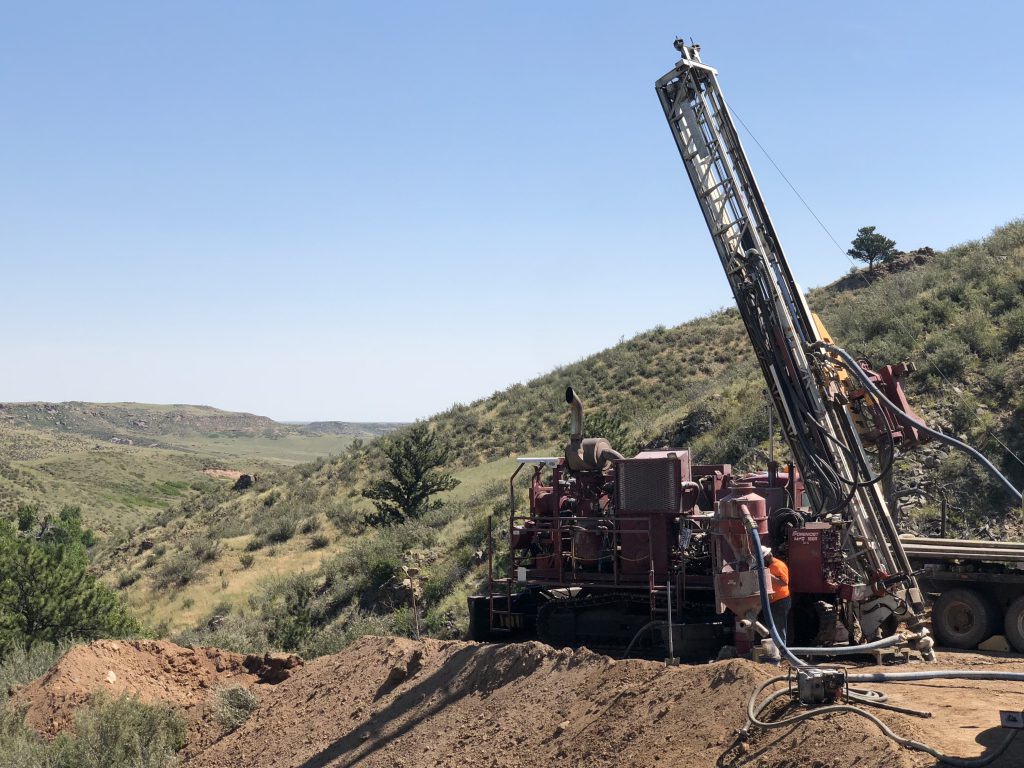U.S. Gold drills 176.8 metres of 1.003 g/t AuEq at CK Gold Project

U.S. Gold Corp. [NASDAQ-USAU] announced additional results of the recent 29-hole drilling program for its CK Gold Project, an advanced stage gold and copper exploration and development project located just outside of Cheyenne, Wyoming.
Drill hole CK20-02c returned 176.8 metres of continuous gold, copper and silver mineralization with an average gold equivalent (AuEq) grade of 1.003 g/t gold (gold-silver-copper), including 141.5 metres of 1.126 g/t AuEq, including 35.3 metres of 0.509 g/t AuEq.
Drill hole CK20-01c returned 177.5 metres grading 1.1216 g/t AuEq, including 29.4 metres of 1.983 g/t AuEq, including 116.8 metres of 0.765 g/t AuEq, including 31.3 metres of 1.668 g/t AuEq. See company press release for complete assay details.
Hole CK20-02c was drilled from the same pad as CK20-01c, northerly and perpendicular to 01c
With thicker, similar grade mineralization relative to CK20-01c, starting from surface.
George Bee, President and CEO, said, “With hole CK20-02c, the second of seven holes within the resource designed to collect metallurgical samples, again we confirm two key aspects of the CK Gold resource. Firstly, the continuous nature of the mineralization with attractive grades starting at surface. Secondly, looking towards project development if our PFS and FS show promise, a project that we believe should produce payable material at the start of mine operations without the common delays and up-front costs associated with pre-stripping waste. This has a very beneficial effect on project economics compared to most other projects where significant costs are incurred pre-stripping waste material in order to access mineralized material, enabling the company to realize revenue quicker without the additional cost of mining excess overburden.”
Hole CK20-02c shows continuous gold and copper grades for the length of the hole with better grades near surface than the neighboring hole, CK20-01c. The hole was terminated at its planned depth in lower-grade mineralization at the edge of the deposit as known; however, the limits of mineralization were not tested as this hole was designed to collect a representative sample for metallurgical testing on a priority basis.
